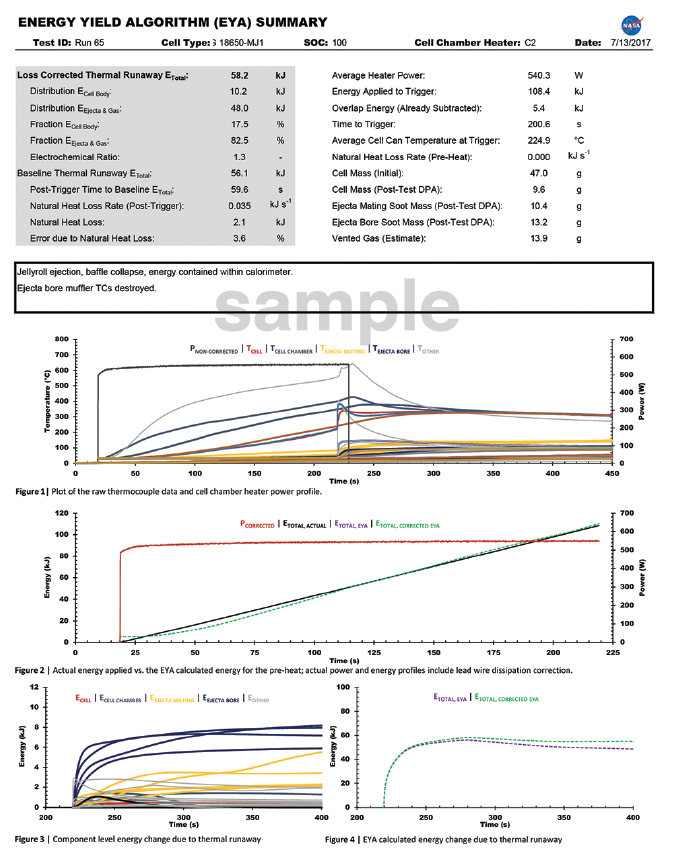Download PDF: Calorimetry of Lithium-ion Cells During Thermal Runaway
Lithium-ion (Li-Ion) cells are widely used in consumer products. Recent well-publicized events involving Li-Ion batteries in devices such as laptop computers, electric cars, commercial aircraft and even toys have drawn attention to the phenomenon of thermal runaway – where stored energy within the cell is rapidly released as heat along with vented effluents. With increased use of Li-Ion cells in space applications such as extravehicular activity hardware, care must be taken to ensure the battery design does not promote propagation of thermal runaway to adjacent cells.
Thermal runaway can be studied through calorimetry – a precise measurement of heat liberated during the thermal runaway process. Existing calorimetric methods such as Accelerating Rate Calorimetry (ARC) provide data on the total energy yield from a cell during thermal runaway. But ARC cannot separate the fraction of energy conducting through the cell casing from that venting from the cell. Understanding how the released energy is apportioned informs the design process, improves the ability to model heat transfer in the battery and allows for more effective thermal runaway mitigations in the battery design.
A new calorimeter for the popular 18650-sized Li-Ion cell has been developed under an NESC assessment and is designed to measure the total energy yield as well as the fractions conducted and vented. An instrumented cell is placed into the cell chamber and heated until thermal runaway is triggered. Separate heat transfer paths measure the energy yield from the cell as its energy is conducted through the calorimeter. Effluents can be collected for further analysis.
For more information, contact:
Steven Rickman, Johnson Space Center, steven.l.rickman@nasa.gov



























